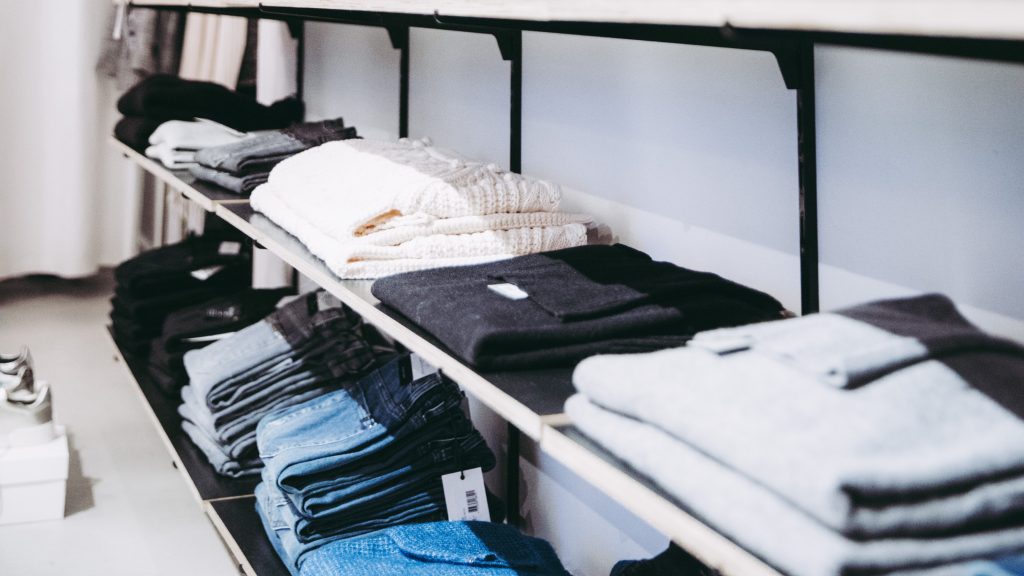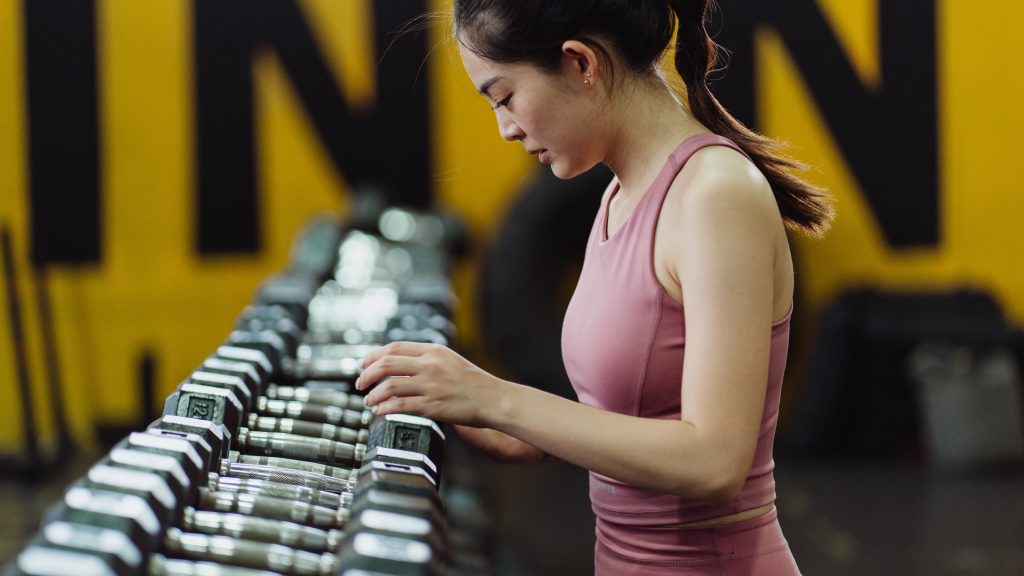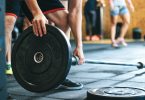Introduction:
Maintaining proper hygiene while engaging in physical activities is crucial for overall health and well-being. Regularly washing gym wear is a key aspect of personal hygiene that often gets overlooked. In this comprehensive guide “The Importance of Regularly Washing Gym Wear: A Guide to Optimal Hygiene”, we highlight the importance of cleaning your gym clothes regularly and provide step-by-step instructions to ensure optimal hygiene. From understanding the risks of unwashed gym wear to practical tips for washing and caring for your activewear, we’ve got you covered.
-
The Risks of Unwashed Gym Wear:
- Bacterial buildup: Sweat-soaked gym wear creates an ideal environment for bacteria to thrive. Accumulated bacteria can lead to unpleasant odors, skin infections, and other health issues.
- Fungal infections: Warm, moist conditions in unwashed gym clothes promote the growth of fungi, such as athlete’s foot and ringworm. These infections can spread to other parts of the body.
- Allergies and irritation: Dust, pollen, and other allergens can cling to unwashed gym wear, leading to allergic reactions and skin irritation.
-
How Often Should You Wash Your Gym Wear?
- Frequency guidelines: As a general rule, gym clothes should be washed after each use. This ensures the removal of sweat, bacteria, and other contaminants. However, if you wear your gym clothes for light activities with minimal sweat, you may be able to stretch the usage to two workouts.
- Odor detection: If your gym wear smells even slightly after a workout, it’s a clear indication that it needs to be laundered.
-
Proper Washing Techniques for Gym Wear:
- Sorting: Separate your gym clothes from other laundry items to prevent cross-contamination. Sort them based on color, fabric type, and level of dirtiness.
- Pre-treating stains: Treat any visible stains on your gym wear with a stain remover before washing.
- Temperature and detergent: Follow the care instructions on your garments, but generally, using a cold-water setting and a mild, scent-free detergent is recommended. Hot water can damage certain fabrics and cause shrinkage.
- Gentle cycle and delicate bags: Opt for a gentle cycle to protect the integrity of your gym wear. Consider using a mesh laundry bag to prevent tangling and stretching of delicate fabrics.
-
Drying and Storing Your Gym Wear:
- Air drying: Hang your gym wear to dry in a well-ventilated area or outdoors. Avoid using a dryer as high heat can damage the fabrics and elastic bands.
- Sunlight exposure: Sunlight can naturally disinfect and freshen gym wear, so if possible, hang them in direct sunlight for a few hours.
- Proper storage: Fold or hang your clean gym wear in a clean, dry space to prevent moisture buildup and odors.
-
Additional Tips for Optimal Hygiene:
- Shoes and accessories: Don’t forget to clean your gym shoes and accessories regularly. Wipe down shoes with disinfectant wipes, and wash accessories such as sweatbands and headbands.
- Personal hygiene: Shower before and after workouts to minimize the transfer of sweat and bacteria to your gym wear. This helps maintain optimal hygiene.
- Gym bag hygiene: Your gym bag can also harbor bacteria and unpleasant odors. Clean your gym bag regularly by wiping it down with disinfectant wipes and allowing it to air out between uses. Consider using washable or removable liners to make cleaning easier.
- Sweating during workouts: If you sweat excessively during your workouts, consider wearing moisture-wicking fabrics that help keep you dry and prevent bacterial growth. Look for activewear made with breathable materials like polyester or nylon blends.
- Avoid reusing sweaty gear: It’s important not to reuse sweaty gym wear without washing it first. Wearing previously worn clothes without washing them can reintroduce bacteria and unpleasant odors to your body.
- Launder gym towels separately: If you use towels during your workouts, launder them separately from your gym wear. Towels tend to be more absorbent and can hold on to bacteria, so washing them separately helps ensure thorough cleanliness.
- Follow manufacturer’s instructions: Different brands and fabrics may have specific care instructions, so it’s important to read and follow the manufacturer’s guidelines for washing and drying your gym wear to avoid damage.
-
The Benefits of Regularly Washing Gym Wear:
- Enhanced comfort: Freshly laundered gym wear feels more comfortable and pleasant against your skin, allowing you to focus on your workouts without distractions.
- Prolonged lifespan: Regular washing helps remove sweat, oils, and bacteria that can degrade the fabric over time. This can extend the lifespan of your gym wear, saving you money in the long run.
- Confidence boost: Knowing that your gym wear is clean and fresh can boost your confidence and motivation during workouts. You can fully concentrate on achieving your fitness goals without worrying about unpleasant odors or hygiene issues.
- Preventing skin irritations: Regularly washing your gym wear helps remove sweat, oils, and bacteria that can accumulate on the fabric. By doing so, you reduce the risk of skin irritations, such as rashes and breakouts, that can result from prolonged contact with unwashed gym clothes.
- Maintaining fabric performance: High-performance activewear often comes with special features like moisture-wicking and odor-resistant properties. Regular washing helps maintain these functionalities, ensuring your gym wear performs at its best and keeps you comfortable during workouts.
- Eliminating lingering odors: Over time, unwashed gym wear can develop persistent odors that are difficult to remove. Regular washing helps eliminate these odors, keeping your clothes smelling fresh and pleasant.
- Promoting overall cleanliness: Clean gym wear is an essential aspect of overall cleanliness, as it prevents the transfer of bacteria and contaminants from your workout gear to your body. By regularly washing your gym wear, you reduce the risk of potential infections and maintain a hygienic environment for yourself and others.

Photo by Tembela Bohle: https://www.pexels.com/photo/black-gondola-shelf-1884579/
-
Hygiene Tips for Shared Gym Facilities:
- Personal towel usage: When using shared gym facilities, bring your own clean towel to place on exercise equipment and benches. This acts as a barrier between your body and potentially unclean surfaces.
- Disinfecting equipment: Before and after using gym equipment, sanitize it with disinfectant wipes or sprays provided by the facility. This helps minimize the risk of picking up bacteria from previous users.
- Proper hand hygiene: Wash your hands thoroughly with soap and water before and after using shared gym equipment. If soap and water are not available, use hand sanitizer with at least 60% alcohol content.
- Avoid touching your face: During workouts, avoid touching your face to prevent the transfer of bacteria from your hands to vulnerable areas like your eyes, nose, and mouth.
- Showering immediately after workouts: After exercising at a shared gym facility, take a shower as soon as possible to remove sweat and bacteria from your body. Remember to wash your gym wear promptly as well.
- Wearing clean socks and underwear: In shared gym facilities, it’s essential to wear clean socks and underwear to minimize the spread of bacteria and maintain personal hygiene.
- Avoid sharing personal items: Refrain from sharing personal items like towels, water bottles, or workout accessories with others. Sharing such items increases the risk of bacterial and viral transmission.
- Regularly clean your water bottle: If you use a reusable water bottle, make sure to clean it thoroughly after each use. Bacteria can thrive in moist environments, so proper cleaning and drying are essential.
- Use disinfectant wipes on touchpoints: Before using any equipment or touching common surfaces like doorknobs or handles, wipe them down with disinfectant wipes. This simple step helps reduce the risk of contamination.
- Respect personal space: Give others enough space during workouts to minimize physical contact and prevent the spread of germs. Be mindful of maintaining a respectful distance, especially in crowded areas.
- Stay home if you’re sick: If you’re feeling unwell or have symptoms of illness, it’s best to stay home and avoid using shared gym facilities. This helps protect others from potential infections.
- Mindful use of locker rooms: In shared gym facilities with locker rooms, be mindful of hygiene practices. Use flip-flops or shower shoes to protect your feet from potential infections in communal showers. Avoid leaving wet towels or clothing on benches or floors to prevent the growth of bacteria.
- Disinfect your phone and other devices: Our electronic devices, including smartphones and smartwatches, can harbor bacteria. Clean and disinfect them regularly, especially after using them during workouts. Use alcohol-based wipes or disinfectant sprays designed for electronic devices.
- Be mindful of respiratory hygiene: When using shared gym facilities, be conscious of respiratory hygiene. Cover your mouth and nose with a tissue or your elbow when coughing or sneezing to prevent the spread of droplets. Dispose of used tissues properly and wash your hands afterward.
- Stay hydrated and nourished: Proper hydration and nutrition play a crucial role in supporting your immune system. Drink plenty of water before, during, and after workouts, and consume a balanced diet rich in vitamins and minerals to maintain overall health and strengthen your body’s defenses.
-
The Importance of Regular Equipment Cleaning:
- Wipe down equipment before and after use: To maintain hygiene in shared gym facilities, it’s crucial to wipe down exercise equipment before and after use. Use disinfectant wipes or sprays provided by the gym to clean surfaces thoroughly, including handles, seats, and touchscreens. This practice helps prevent the spread of bacteria and viruses.
- Clean exercise mats and props: If you use exercise mats, blocks, or other props during your workouts, make sure to clean them regularly. Follow the manufacturer’s instructions for proper cleaning and disinfection methods to maintain their hygiene and integrity.
- Avoid touching your face during workouts: While exercising, try to avoid touching your face to minimize the transfer of sweat, bacteria, and viruses from your hands to vulnerable areas. If necessary, use a clean towel or tissue to wipe away sweat.
-
Hygiene Tips for Personal Workout Spaces:
- Clean your home workout equipment: If you have a personal workout space at home with exercise equipment, ensure you clean and maintain it regularly. Wipe down surfaces, handles, and seats with appropriate cleaning solutions to prevent the buildup of bacteria and ensure a hygienic workout environment.
- Wash home workout towels: If you use towels during your home workouts, remember to wash them regularly. Follow the same laundering guidelines mentioned earlier to ensure cleanliness and prevent the growth of bacteria.
-
The Role of Personal Hygiene Habits:
- Shower before and after workouts: Prioritize personal hygiene by taking a shower before and after your gym sessions. This practice helps remove sweat, bacteria, and other contaminants from your body, promoting overall cleanliness.
- Use antibacterial soap: When showering, opt for antibacterial soap to effectively eliminate bacteria from your skin. Pay attention to areas prone to sweating, such as underarms, feet, and groin, to reduce the risk of bacterial growth.
- Change into clean clothes: After showering, change into fresh, clean clothes to maintain hygiene. Avoid putting on clothes that were previously worn during workouts without washing them first.
-
The Importance of Proper Hand Hygiene:
- Wash your hands frequently: Proper hand hygiene is crucial in maintaining personal hygiene and preventing the spread of germs. Wash your hands with soap and water for at least 20 seconds before and after workouts, after using shared gym equipment, and after using the restroom. If soap and water are unavailable, use hand sanitizer with at least 60% alcohol content.
- Avoid touching your face: During workouts, refrain from touching your face to minimize the transfer of bacteria from your hands to vulnerable areas such as your eyes, nose, and mouth. If necessary, use a clean towel or tissue to wipe away sweat instead of using your hands.
-
Proper Foot Hygiene:
- Wear clean socks and footwear: Always wear clean socks and workout shoes to maintain foot hygiene. Moisture-wicking socks can help keep your feet dry and minimize the risk of fungal infections. Rotate your workout shoes to allow them to air out and dry between uses.
- Use foot powder: If you tend to have sweaty feet, consider using foot powder or antiperspirant to keep them dry and reduce the risk of foot odor and fungal infections.

Photo by Ekaterina Belinskaya: https://www.pexels.com/photo/photo-of-front-load-washing-machines-4700411/
-
Regular Gym Maintenance:
- Gym cleanliness: Choose a gym facility that prioritizes cleanliness and regularly maintains the cleanliness of the entire space. This includes properly sanitized equipment, clean floors, and well-maintained locker rooms and showers.
- Air circulation: Opt for gyms that have good ventilation and air circulation to reduce the buildup of moisture, odors, and bacteria. Fresh air circulation helps maintain a clean and comfortable environment.
-
Educate and Encourage Others:
- Spread awareness: Educate your fellow gym-goers about the importance of regular washing and proper hygiene practices. Encourage them to follow hygiene guidelines and lead by example.
- Share hygiene tips: Share tips and information about proper gym wear washing, equipment cleaning, and personal hygiene with others. By collectively maintaining good hygiene, the entire gym community benefits.
-
Regular Maintenance of Gym Wear:
- Check for wear and tear: Regularly inspect your gym wear for any signs of wear and tear, such as frayed seams or stretched fabric. Replace damaged or worn-out clothing to ensure proper functionality and hygiene.
- Follow specific care instructions: Different fabrics and clothing items may have specific care instructions. Pay attention to the labels on your gym wear and follow the recommended washing and drying methods to maintain their quality and hygiene.
-
Importance of Proper Drying:
- Thoroughly dry your gym wear: After washing, make sure your gym wear is completely dry before storing or wearing it again. Damp or moist clothing can promote bacterial growth and cause unpleasant odors. If possible, hang them in a well-ventilated area or use a dryer on a low-heat setting.
-
Hygiene Considerations for Different Types of Gym Activities:
- Yoga and Pilates: If you practice yoga or Pilates, where direct contact with the floor is common, consider using a yoga towel or mat that can be easily cleaned or washed to maintain hygiene.
- Group classes: In group exercise classes where equipment is shared, follow the hygiene guidelines mentioned earlier, such as wiping down equipment before and after use and practicing proper hand hygiene.
-
Importance of Regular Cleaning of Fitness Accessories:
- Clean fitness accessories: If you use accessories like resistance bands, foam rollers, or weightlifting gloves, make sure to clean them regularly. Wipe down these items with a disinfectant or follow specific cleaning instructions provided by the manufacturer to maintain their cleanliness and prolong their lifespan.

Image by Ketut Subiyanto: https://www.pexels.com/photo/woman-looking-at-dumbbells-4854258/
-
The Role of Proper Nutrition in Hygiene:
- Eat a balanced diet: A nutritious diet plays a significant role in maintaining overall health and boosting your immune system. Consume a balanced diet rich in fruits, vegetables, lean proteins, whole grains, and healthy fats to support your body’s defense against infections and promote overall hygiene.
-
Adequate Hydration:
- Drink plenty of water: Staying hydrated is essential for optimal performance and overall well-being. Drink an adequate amount of water throughout the day, especially during and after workouts, to maintain hydration and support your body’s natural cleansing processes.
-
Avoiding Cross-Contamination:
- Separate clean and dirty items: Keep your clean gym wear and personal items separate from your used and soiled ones. Use separate bags or compartments in your gym bag to avoid cross-contamination.
-
Regularly Clean Your Gym Bag:
- Clean your gym bag: Over time, your gym bag can accumulate dirt, sweat, and bacteria. Regularly clean your gym bag by emptying and wiping down the interior with a disinfectant wipe or spray. Allow it to air dry thoroughly before packing clean gym wear and accessories.
-
Proper Sleep Hygiene:
- Get enough sleep: Adequate sleep is crucial for maintaining a strong immune system and overall well-being. Aim for 7-9 hours of quality sleep each night to support your body’s natural defense mechanisms and promote optimal hygiene.
-
Mindful Personal Hygiene Habits:
- Avoid excessive perfume or cologne: While it’s important to maintain personal hygiene, be mindful of using excessive perfume or cologne in shared gym spaces. Strong scents can be overwhelming and cause discomfort for others.
- Cover open wounds or cuts: If you have any open wounds or cuts, ensure they are properly covered with a bandage or dressing to prevent the spread of bacteria and protect yourself and others from potential infections.
-
Periodic Equipment Maintenance:
- Ensure equipment cleanliness: Gym equipment can accumulate dust, sweat, and bacteria over time. Gym staff should regularly inspect and clean the equipment to maintain hygiene standards and ensure the safety of the users.

Photo by Alexander Grey: https://www.pexels.com/photo/close-up-photo-of-folded-clothes-4049148/
-
Hygienic Locker Room Practices:
- Keep the locker room clean: When using the locker room facilities, be considerate of others by keeping the area clean. Dispose of trash properly, avoid leaving personal items lying around, and use designated bins for used towels or other disposable items.
-
Professional Cleaning Services:
- Employ professional cleaning services: Gyms can enhance hygiene standards by hiring professional cleaning services. These services can provide deep cleaning, sanitization, and maintenance of the gym facilities, ensuring a clean and safe environment for all patrons.
-
Regular Gym Inspections:
- Conduct regular inspections: Gym management should implement regular inspections of the facility to identify any potential hygiene issues or maintenance needs. This includes checking the cleanliness of common areas, equipment, restrooms, and locker rooms.
-
Staff Training and Education:
- Train staff on hygiene practices: Gym staff should receive proper training on hygiene protocols, including cleaning procedures, equipment maintenance, and proper handling of shared items. This ensures that staff members are knowledgeable about maintaining a clean and hygienic environment.
-
Member Feedback and Communication:
- Encourage member feedback: Gym management should actively seek feedback from members regarding hygiene concerns or suggestions for improvement. This open communication allows for addressing any issues promptly and implementing necessary changes to enhance the overall hygiene of the gym.

Photo by Ksenia Chernaya: https://www.pexels.com/photo/woman-fixing-clothes-on-the-rack-3965548/
Conclusion:
In conclusion, maintaining proper hygiene in the gym is of utmost importance for both personal well-being and the overall health of the gym community. Regularly washing gym wear, cleaning equipment, practicing good personal hygiene habits, and following hygiene guidelines for shared spaces are all essential steps in creating a clean and safe workout environment.
By adopting these hygiene practices, you can reduce the risk of bacterial and viral transmission, prevent odors, and promote a healthier and more enjoyable gym experience. Additionally, paying attention to nutrition, hydration, and adequate sleep further supports your immune system and overall well-being.
Remember, hygiene is a collective effort that involves gym management, staff, and members working together to maintain high standards of cleanliness. Open communication, staff training, and member feedback play vital roles in continuously improving hygiene practices and addressing any concerns.
By prioritizing hygiene, we create an environment that promotes the health and safety of everyone involved. So, let’s make a commitment to regularly wash our gym wear, clean equipment, practice good personal hygiene, and follow the provided guidelines. Together, we can optimize our workout experiences, foster a positive gym atmosphere, and prioritize the well-being of ourselves and others.
Keywords:
Regularly washing gym wear, importance, optimal hygiene, guide, cleanliness, gym facilities, personal hygiene habits, equipment cleaning, shared gym equipment, disinfectant wipes, touchscreens, avoiding face touching, home workout equipment, clean towels, showering, antibacterial soap, changing clothes, regular maintenance, wipe down, air circulation, educating others, spreading awareness, nutrition, hydration, sleep hygiene, avoiding cross-contamination, clean gym bag, foot hygiene, yoga and Pilates, group classes, fitness accessories, gym cleanliness, professional cleaning services, staff training, member feedback, gym inspections.
For more hacks Click Here.








